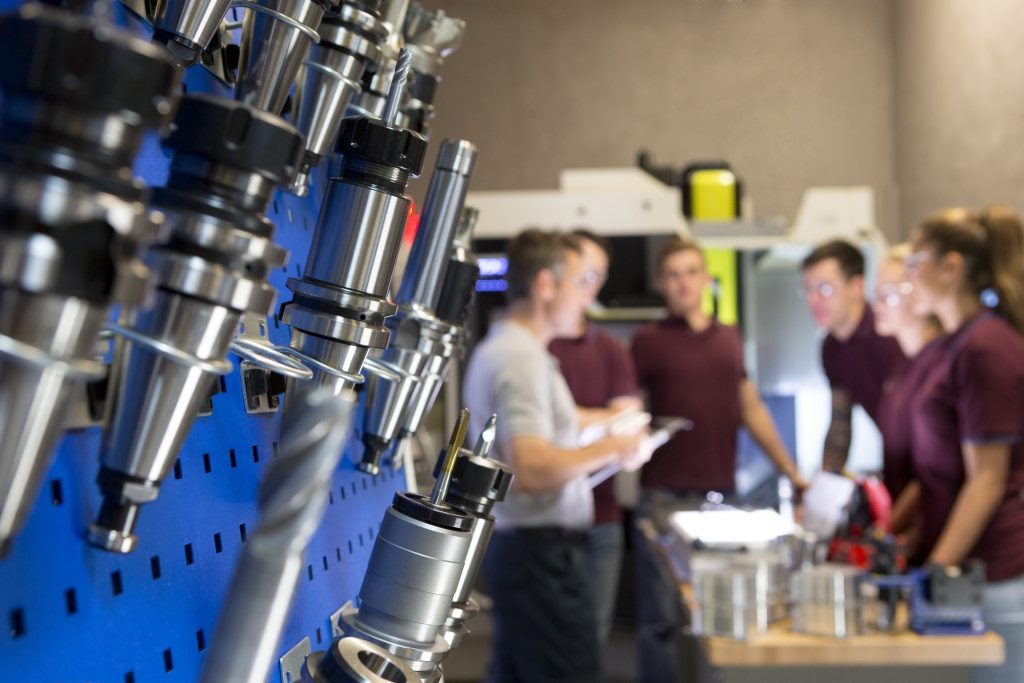In today’s world, energy and time are precious commodities, that, if unnecessarily wasted, can’t be regained. Or, as the old saying goes — time is money, which is why it’s essential to use all your resources as wisely as possible.
Well, this is where the concepts of productivity and efficiency become essential factors. The term productivity refers to the effectiveness of the productive effort. It is usually measured as the output per input, while efficiency refers to fulfilling maximum productivity with the minimum waste of resources and effort.
In simplest terms, the more output you can generate in the shortest amount of time, the more money you can make. There’s no denying that it’s an attractive bottom line for every manufacturer out there.
Nevertheless, in order to maximize the return in your manufacturing facility, productivity must first be optimized and maximized. The good news is that there are numerous ways to achieve increased productivity without sacrificing the quality of your output. So, to make things easier for you, we’ve compiled this article where we’ll showcase the top four ways to increase productivity within your manufacturing plant.
Update Your Processes and Technology
To begin with, start identifying areas of your production processes and technology that could use some changing or at least updating. Because operations that have been in place for an extended period can be riddled with workarounds as if new equipment was bought or specific production methods have changed.
For example, think about automating your outmoded, manual production processes, which is a powerful way to increase efficiency and reduce error. In addition, you should stop working on your prototypes in-house and outsource this vital part of the entire product development process to professional prototyping services. That will do the job better, quicker, and for less money.
Technology-wise, you can employ new software solutions that can help your manufacturing business with inventory, scheduling, and monitoring the complete workflow of your space. Also, explore if any part of your equipment and machinery could be switched with newer, better models as improvement in equipment can also enhance the production speed and quality.
Photo from Industry Today
Condemn to Regular Maintenance
Without a shred of doubt, the fastest route to slowing things down is by ignoring regular maintenance. In the end, downtime for standard maintenance costs way less than downtime due to worn or broken equipment. However, even though maintenance can be scheduled, as an experienced manufacturer, you know that breakage always comes at the worst possible time.
To avoid these kinds of problems, you should train your workforce in troubleshooting procedures and regular maintenance. In addition, ensure to schedule preventive care at regular intervals by identifying the best time by utilizing information from the floor and your workflow processes.
Organize Your Workspace
As you probably know by now, reducing movement and clutter saves time, and less time per unit manufactured means that your facility is more productive and efficient. Therefore, to organize your workspace better and save some precious time, you should explore ways to reduce movement for optimal task efficiency.
It would be best to do everything within your power to reduce distance and travel time wherever possible. Think about it this way: if a product must be transferred from one machine to another, is there a better way to shorten the distance, orient the product better, or move it faster yet safely to the next step in the process? Think about implementing techniques like Kanban (just-in-time production) to reduce delays and increase your manufacturing facility’s overall efficiency and productivity.
Photo from Manufacturing
Manage Your Inventory
Last but not least, the amount of inventory you carry must be maintained at an optimal level. Too little or too much stock can pose issues for your manufacturing facility’s productivity. Because if you have too much inventory, detecting a place to store everything can be space-consuming and tricky, with the possibility of not using a good part of the inventory at all.
Carefully manage your inventory by keeping track of it and utilize automatic notifications to alert you of future shortages. Moreover, use your previously collected data to forecast which items may be in greater demand or reaching short supply so that you can mitigate the problem. Managing your inventory is one of the best ways to ensure that you won’t wait for the stock to arrive or spend money or space on unwanted housing inventory.
Final Thoughts
The bottom line enhanced productivity results in more revenue and the chance to expand the business, take more work, increase your workers’ wages, and buy new equipment. So make it a company policy to review your operational processes regularly and adopt the things that add the most value to your company.

